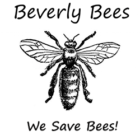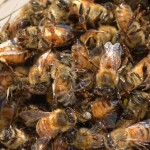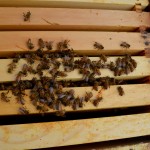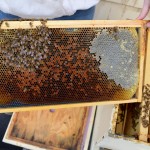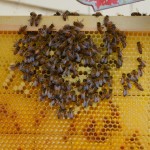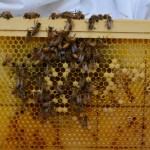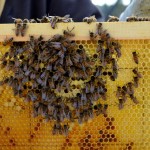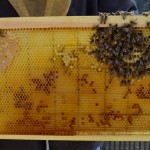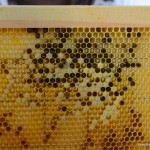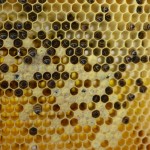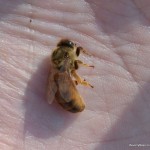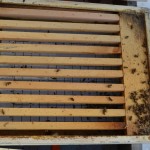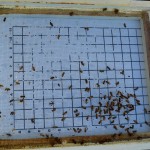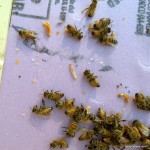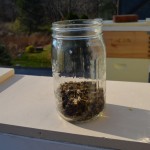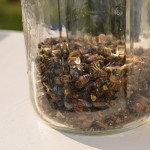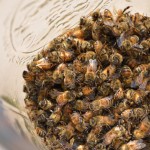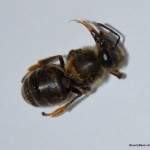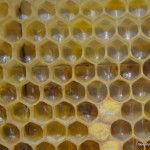Death of a Hive: A Postmortem Analysis
It is with great sadness that I write this post and one of the reasons it has been a while since I have posted last. Of course this was also partly due to normal holiday busyness and the craziness of being parent at this time of year but also because of some issues that were occurring in the apiary. I did not want to write about them until I knew more conclusively what had happened and what was going on with my bees.
First A Little More About Me
First off I am an organic food nut, which actually started for me many years before the craze took hold nationwide. It started when I worked as a student in marine biology at the Marine Biology Laboratory in Woods Hole, MA studying cell division in Sea Urchins. It was here that I saw first hand what a miniscule amount of chemicals in tap water could do to deform or kill a single cell and how tap water residue could impede normal cell division. In order to avoid this and possibly ruin the results of our experiments, after we washed our equipment in tap water (the kind everyone drinks every day) we had to rinse it 7 times (yes SEVEN times) in distilled water to get rid of all the chemical residue left on the equipment by the soap and tap water. Needless to say, a few years of this and I was filtering all the water I drank. This also spurred my interest in eating pesticide free and organic food and healthy eating. After all if normal tap water residue could harm a single cell what could these other chemicals be doing to our bodies?
My Conversion To Treatment Free Beekeeping
So when I started beekeeping and I learned about all the chemicals that people put on their hives I was mortified. But convinced the bees would die without them I reluctantly went along with the masses. I used the so called softer organically approved chemicals but they were chemicals none the less. Then I attended a Treatment Free Beekeeping Conference and spent a great deal of time with some treatment free beekeepers. All of them were inspiring – Michael Bush, Dean Stiglitz and his wife Ramona Herboldsheimer, Dee Lusby, Les Crowder, Kirk Webster but meeting Sam Comfort, visiting his apiary and spending time with him especially was an eye opener for me. The way he kept bees made sense to me, it just felt right and most of all it was way easier than what I had been doing. Prior to this conference I knew people kept bees treatment free and I often spoke to several bee blogging friends about it, including Mil Apostol of Urban Farm And Beehives and Jason Bruns of LetMBee, but I had not met anyone in person or had seen a large commercial apiary operating this way.
After this conference, I was committed to keeping bees treatment free and trying to avoid sugar feeding unless necessary. Unfortunately there is a sad side to keeping bees treatment free and that is bee mortality of chemically dependent and sugar addicted bees. People put all those chemicals on the hives for a reason and some bees have been bred to not be able to survive without them. Some of the hives I had were like that. Crocus in particular appeared to be one.
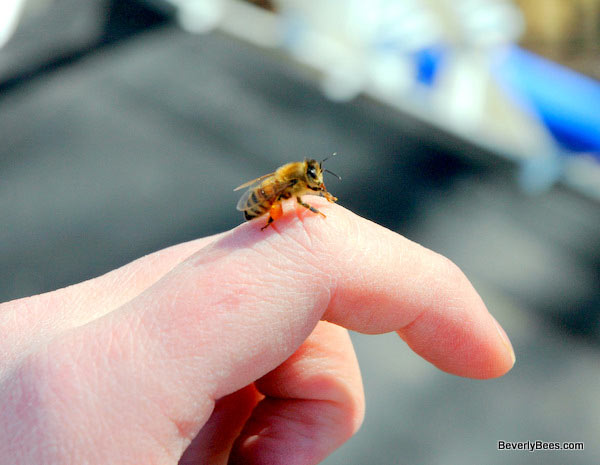
The History Of Crocus Hive
Crocus was a two year old Italian honey bee hive that originated from a package of bees from Georgia. Since the beginning this hive has struggled. The new queen failed and the hive superceded her, then swarmed with one of the virgin queens, which luckily I was able to catch. But since they did not have very many bees to begin with this left two small hives. That year I ran a two queen system in the hive hoping it would allow the bees to draw enough wax to survive the winter. In the fall, I choose the stronger queen to rule both hives and combined them together. I also treated them with Apiguard to kill the mites. They did not have enough stored honey going into the winter of 2011 so I had to feed them with a candyboard to help them survive.
The following spring they built out quickly. Maybe too quickly because they started ditching drones as they consumed all their resources and began to starve. There were some bees with sacbrood but it went away. They seemed to do okay in the summer of 2012 and had filled an entire honey super with honey. Their population was booming. I became worried about them when in the fall they had uncapped and started eating their honey super and had not stored any honey for the winter. Instead they consumed it to raise a massive population of bees (a repeat of the previous year). I pulled the honey super off the hive and gave it to another hive Willow who had already filled a honey super and had plenty of stores set aside for winter. The hope was that Willow would also fill Crocus’s honey super back up and I could then feed it back to Crocus over the winter. In the meantime, I feed crocus sugar water hoping this hive would store that for the winter in their empty deep supers. They took the sugar water but reluctantly.
The Beginning Of The Death Spiral
Then something happened that was beyond my control, that I have not talked about on the blog yet. My city announced that they were going to be spraying for mosquitoes with Duet, a chemical that is highly toxic to bees. I have a lot to say about this and will write more on this later but for now you just need to know that I was unable to move this hive with the short notice of the spraying given to me by the town. Luckily, I was able to move others as the mosquito spray weakened all my hives that stayed for the spraying. I covered my hives as instructed and according to the map provided by the town, the closest the spray was supposed to come was 1/4 mile from my house. Yet this was still well within my bee foraging territory.
After the spray occurred, I noticed lots of dead bees from Willow and two days later I noticed lots of dead bees from all 4 hives that stayed on my roof during the spraying. The problem was the bee deaths did not stop with lots of dead bees one day, it just continued and continued and all the hives that stayed for the spraying began to dwindle (Crocus, Willow, Milkweed and Borage). When I checked on Crocus a few weeks later, the hive had gone from a booming overpopulated hive to only a handful of bees. The same result was seen in differing levels for all 4 hives that stayed during spraying (more on this in a future post). After seeing this, I knew the death of Crocus was imminent. That night we had a cold snap and the next day the hive was dead. There was just not enough bees to heat the cluster. Crocus had a mere one cup of bees left in the hive when 6 weeks prior they had layers and layers of bees on every frame. There were not very many varroa or dead bees on the bottom board. The bees were just missing. There were plenty of stores and few signs of disease, aside from a week hive. I found the queen, there was some brood in all stages and eggs being laid. There were even multiple eggs in some cells, a last-ditch effort by the queen to save her dying colony. This hive had suffered what appeared to be a collapse of the colony as seen in colony collapse disorder.
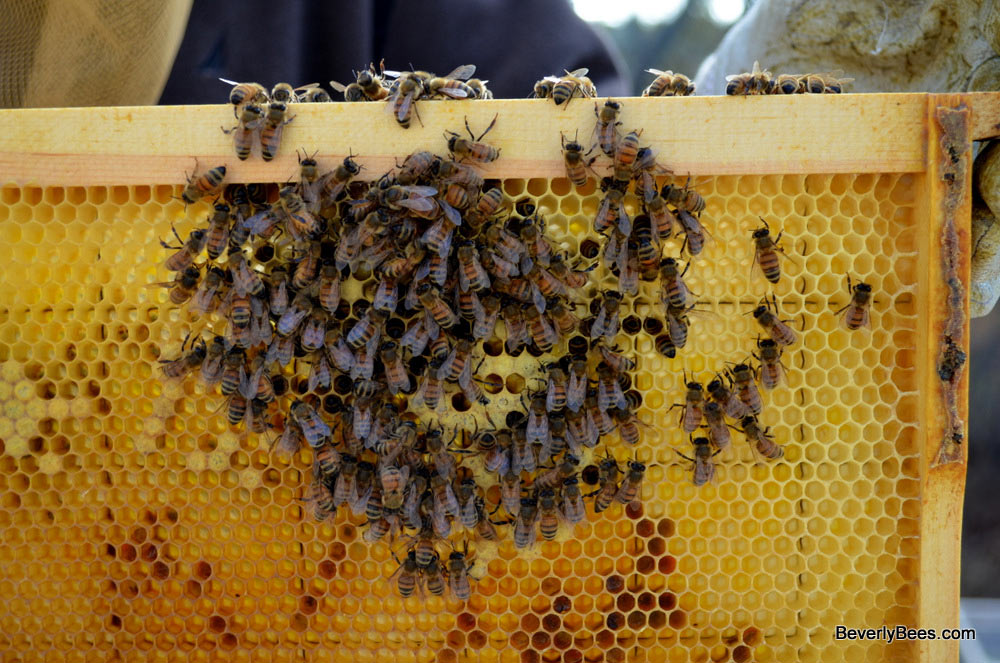
Upon inspecting the brood nest further and pulling out some pupae, I did notice a few of the bees that died before emerging were completely without wings, however there were no easily visible varroa on these bees. They were just wingless. I collected the bees and a sample from the broodnest and sent it off to be tested to the USDA lab in Maryland. Unfortunately, this lab does not test for pesticides only for varroa and other diseases. In order to get my bees tested for pesticide exposure, I would have to send it to another lab and pay $300 per sample (per bees and per pollen sample) and hope the pesticide was still in there and able to be detected. I elected not to do this since if my bees had suffered from pesticide exposure it was indirect. Most of the dead bees were missing and had left the hive so there was no guarantee I would even be sending the correct sampling of bees.
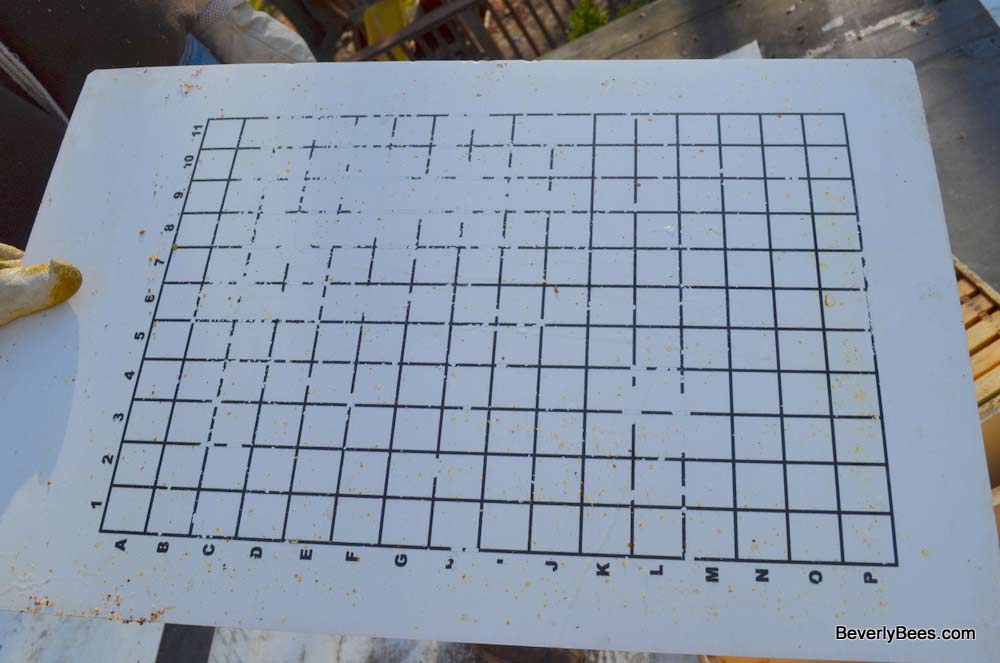
The Results
It took about 6 weeks to get my test results back from Maryland and what they said was very surprising to me. No disease was present in the comb or the bees but Crocus had an extremely high level of mites. In fact it had 27.3 mites per 100 bees more than enough to kill a hive. So while I do firmly believe, with a bias against pesticides and with only circumstantial evidence, that the mosquito spray contributed to the death of this hive, I cannot deny that my method of keeping these bees treatment free and not treating for varroa at all contributed to the death of this hive. I do wonder though, since I had not seen mite problems in the hive pre-mosquito spray and very little mites on the mite count board, if the rapid loss of bees dying after the spraying led to a more concentrated mite population on those that were left in the hive and the two things together led to a death spiral for this hive. I guess I will never know for sure and that is one of the problems with being a beekeeper and taking care of an animal that cannot ever be controlled completely.
To see more pictures of the dead hive and what I found in it, please click on any picture below and use the arrows to scroll through the gallery.
If you are viewing this post in an email or reader and the gallery does not display correctly, please view this post on the website by clicking here.
To learn more about the history of Crocus hive click here.
Other Posts You May Enjoy:
